New Event Concept Allows Easterners to Explore Research in a Novel Way.
On Saturday October 25, in Carolingia, over 70 Easterners participated in a new way to hold an event. There was a autocrat, gate, classes, even a musician playing in the social hall throughout the day. There was even a dayboard, unconventional as it was. (Those who pre-registered had the option of ordering a burrito lunch catered in) What there wasn’t, was garb, court, or people in persona.
Autocrat Lady Aildreda de Tamworth has spent a lot of time talking with people over the last year or so about how the current Arts and Sciences model works really well for some subjects, and less well for others. Most of what we do at events and in persona is based on finished products, and competition. She learned from others that was what missing, what people truly wanted, was a place to talk about process, a place to talk about what went wrong, what they did not understand, where to go next. The idea came up again and again. What if we talked like researchers?

The concept for Voyages of Discovery was born. A non-garb event, run like a research conference. With the help of Lady Eadgyth aet Staeningum, the Massachusetts Convention Fandom Inc loaned the event projectors and screens, Baron Colin Ursell loaned computers as well as ran the technology team that helped all of the presenters use the equipment to help share their work.
The staff also assembled a team to put together and run a research library, staffed throughout the day by reference consultants, many who work as modern librarians or researchers.
There was an impressive collection of books on many topics of interest to Scadians, organized by subject. A great moment occurred when one attendee, who had brought a book in Russian for the great pictures of iconography, discovered that one of the reference assistants in fact spoke and read Russian fluently. They spent much of the afternoon translating the explanations of each photo on sticky notes.
There was a slate of classes on topics varying from Geometric Art in the Renaissance to Medieval Mortuary Rolls, Persian Plants, and the effect on volcanos on medieval weather. Some of the topics deeply benefitted from the technology available. Others were sort of meta-topics, hard to talk about at a traditional SCA event, such as Mistress Lakshmi’s discussion on adopting another culture.
In addition to the classes and reference library, the other new concept was that of a poster session. Researchers used tri-fold boards used most often for science fairs to present information on their works in progress, show their process, and share research. Don Donovan Shinnock presented his work on the similarities and differences between the fencing masters Capo Ferro and Fabris. In addition to his poster, throughout the day he modeled the two different styles.
Mistress Nataliia Anastasiia Evgenova Sviatoslavina vnuchka presented a poster on her process in creating a 15th century paintbrush for illumination, which included her works in progress as well as her finished paintbrushes available for people to try out.
Throughout the day, people had nothing but compliments for this style of event. Many described it as a “rabbit-hole event” People started with one idea or topic, and stumbled down the rabbit-hole through others, moving to different conversations, or running to the research room to check out a new topic they hadn’t considered.
Her Excellency Imigla Venture, Baroness of Carolingia, was excited to leave her coronet and regalia at home, saying that, “This type of event was much less stressful to prepare for, making it much easier to truly focus on the Science aspect.” Don Donovan echoed this, saying, “Without all the other responsibilities of a normal event, we really get to just sit around and geek.” Many others appreciated the conference-like name badges, which had both SCA and modern names on them, helping people connect names to faces and research.
Countess Marguerite inghen Lachlan also held one of her discussion salons, which was perfectly suited for this concept, as they are designed to be regalia and precedence-free discussions of meta-SCA issues. This one discussed the responsibility and feasibility of citing sources and doing research within an SCA context.
As the event ended, many echoed the sentiment that the event be repeated again. People left enthused, ready to begin new avenues of research, and with fresh ideas on how to implement what they learned in a day to day SCA context.


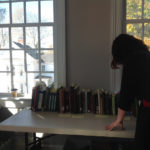
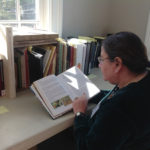

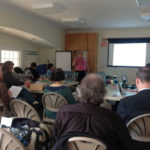
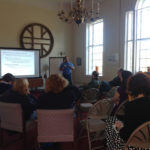
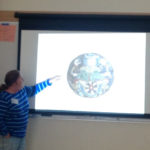
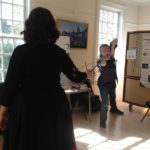
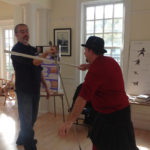
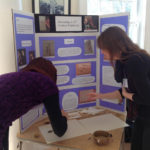
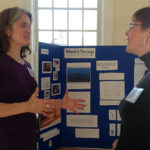
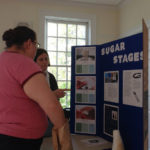
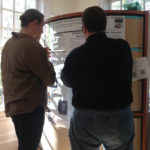
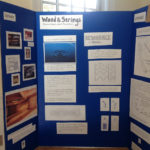
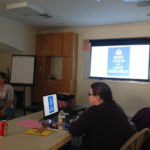
Reblogged this on La Bella Donna and commented:
This!
Reblogged this on Adalyde's Musing and commented:
This is an awesome concept for the future of the Arts and Sciences in the SCA.
This is fantastic! Bravo! It would also be a great forum for “experimental archaeology” I’d think, where you could bring a work in progress (or finished) and explain your thoughts on how something might have been constructed when all you have to go on is a picture of a finished item.